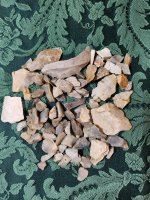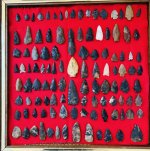I'm kind of new to searching fields. I've pretty much just searched creeks and rivers forever. I'm having a little luck in cut cornfields after it rains. I'm coming across certain areas in a couple harvested cornfields and soybean fields. All of these fields run up hill from a creek. I'm finding debitage pretty heavy in certain areas on all the fields. Other areas absolutely none. Should I concentrate on the areas where I'm finding chert and flint or the whole fields.
Upvote
2














